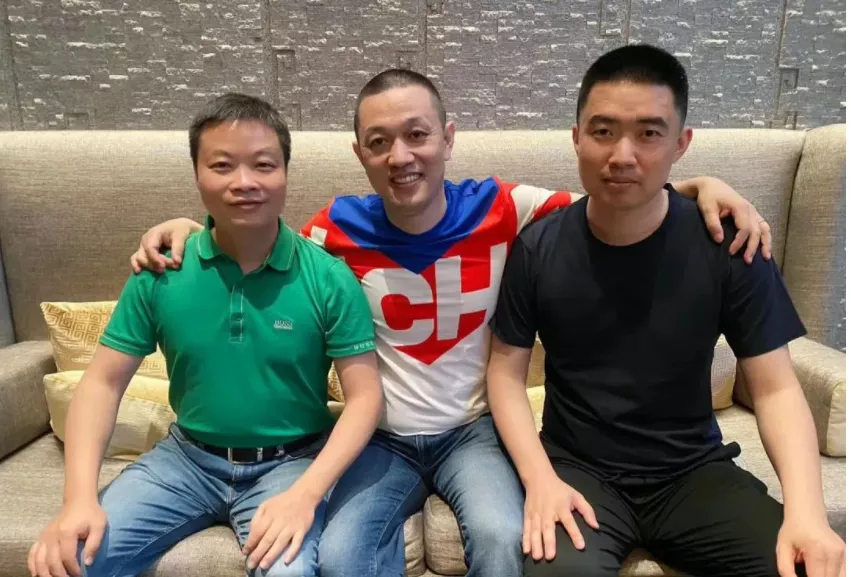“Inward Rotation” Has Become Stale but It Matters in the New-born Carmakers
The term “inward rotation” has become a cliche and seems to have lost its value for discussion. Until today, this concept has been imposed on the new-born car makers.
First of all, “inward rotation” has become a cliche because the concept has been repeatedly explained and has become common knowledge. However, this does not mean that it has lost its significance. After all, it has not been solved fundamentally.
Specifically for the automotive industry, it is indeed an industry that is very inwardly rotated. I remember that as early as ten years ago, some media had calculated the planned production capacity of local car companies in 2015. If I am not mistaken, the production capacity of only 12 mainstream car companies had exceeded 30 million vehicles. However, we all know that the domestic car market did not reach the ceiling of 30 million until the peak in 2017. Moreover, each car company hires a large number of personnel every year, but they are only arranged to do the most basic work in solidified organizations, which is essentially no different from graduates of prestigious universities working as workers in cigarette factories today.
The question is whether the new-born car makers have also become inwardly rotated.
Indeed, it does burn a lot of money. There are only a few participants who survived, such as LI (Lee Xiang) and others who have financing of tens of billions.
Indeed, it has started positive competition. XPeng (Xiao Peng) is targeting the market of CNY 150,000 to CNY 500,000, and the ideal range is between CNY 200,000 to CNY 500,000. NIO is planning to create a mid- to low-end brand that will go below CNY 200,000. The top three are starting to fight for the market share.
Indeed, the competition is very fierce, and there are powerful predators like Xiaomi and OPPO that enter the market as soon as the opportunity arises.
However, if we consider the whole market dynamics, it is easy to find that the new-born car makers are not inwardly rotated, but rather they have shown the way to get rid of inward rotation in the automotive industry.
Input Equals Output
Inward rotation is hopeless; companies burn money, and individuals exert themselves to the utmost. The route is single, and the return is minimal. The new-born car makers do indeed burn money, but they can see a generous return, and even employees working overtime are getting higher value and more opportunities in the industry’s transformation.
Sales volume is the most powerful proof. In the just-passed August, the monthly sales volume of LI, XPeng, and NIO were 5,880, 7,214, and 9,433 respectively, with the first two being impacted by the supply chain due to COVID-19. Nevertheless, the on-year growth of the sales volume for the three companies still reached 157%, 172%, and 248% respectively in the same month. NETA, which delivered 6,613 vehicles in August, even boasted an astonishing year-on-year growth of 449%.
We are all very clear about what “inward rotation” looks like. Hengshui No.1 High School regards students as learning machines, and Internet giants regard their employees as working machines. For just a few points or even zero-point percentages of improvement or growth, they almost require everyone to learn and work except for eating and sleeping, and even going to the bathroom is strictly timed.The efforts made by new car makers are paying off handsomely with doubled growth, which is the opposite of cannibalization.
Sales performance speaks for itself. At the listing ceremony of Xpeng Motors, He XPeng said: “In a short period, P7’s sales in China will surpass those of Audi A4.” Although it sounded like a fantasy, according to Xpeng’s July sales data, P7 has already become one of the top five luxury midsize cars. NIO ES6 and EC6 are both stable in the top ten of the sales chart for mid-size SUVs priced over CNY 300,000. Moreover, the IDEAL ONE has been ranking first on the sales chart for medium and large SUVs for several months.
Among these models, Xpeng P7 has the lowest price with a starting price of CNY 229,900. In such a high-priced market with decades of strict regulations, Xpeng, NIO, and Li Auto have occupied mainstream or even top positions in their respective segments in just a few years. And let’s not forget Tesla, which is known for its list-culling capability. It is fair to say that they have outperformed their competitors rather than cannibalized them.
However, it must be admitted that new car makers are indeed crazy, setting unrealistic goals that the market may not be able to bear.
On June 10th, at an event, Li Bin said that NIO’s second plant will be put into operation in the third quarter of next year. The second plant is located in the recently planned Hefei New Bridge Smart EV Industrial Park, which had a preliminary investment of CNY 50 billion and a planned annual production capacity of one million units.
Also, during the listing ceremony of Xpeng, He XPeng publicly stated that Xpeng’s target delivery by 2025 was 1.05 million units.
As for Li Auto, their ideal goal is already well known: selling 1.6 million units annually. “In China, by 2025, over 8 million intelligent electric vehicles will be sold, and achieving over 20% of market share is a necessary condition for becoming a leading enterprise. Li Auto will have 20% of the market share and become China’s leading intelligent electric vehicle enterprise by then,” Li Xiang wrote in an internal letter at the beginning of this year.
By 2025, assuming that the Hefei New Bridge Smart EV Industrial Park completes the full production line before that, these three companies will have a combined production capacity of nearly four million units. In contrast, Musk said last year that he expected the Shanghai factory’s production capacity to reach one million units annually. It was even rumored that Tesla was planning to buy land to build a second plant, but now it seems that it has become the most conservative company.
 Adding Tesla to Wei Xiaoli’s plan, the cumulative planned production capacity is close to 5 million. With the initial input of 10 billion US dollars, the newly-entered Xiaomi, OPPO waiting for official announcement, and more unknown new giants, including the ambitious companies such as WM, NIO, and Leapmotor. The total amount will probably exceed Li Xiang’s estimated 8 million. Fortunately, Li Xiang’s market expectations are not the most aggressive. He XPeng believes that the penetration rate of electric vehicles will reach 35% by 2025 (calculated based on the 30 million car production and sales scale in 2025).
Adding Tesla to Wei Xiaoli’s plan, the cumulative planned production capacity is close to 5 million. With the initial input of 10 billion US dollars, the newly-entered Xiaomi, OPPO waiting for official announcement, and more unknown new giants, including the ambitious companies such as WM, NIO, and Leapmotor. The total amount will probably exceed Li Xiang’s estimated 8 million. Fortunately, Li Xiang’s market expectations are not the most aggressive. He XPeng believes that the penetration rate of electric vehicles will reach 35% by 2025 (calculated based on the 30 million car production and sales scale in 2025).
We know that the penetration rate of new energy vehicles reached 10.9% in just 7 months from 5.8% in 2020. However, historical data is ultimately only for reference. What will happen in 2025? Will Li Xiang’s prediction reach 8 million or He XPeng’s prediction reach 10.5 million, or higher or lower?
There is both a trend of “the general direction is the trend” and also a process of artificial intervention. It depends on whether new car manufacturers can quickly and effectively dispel market doubts and make consumers willing to choose their products.
If new car manufacturers can convince the market and quickly swallow the share of fuel vehicles, a penetration rate of more than 35% is not impossible. More participants and bigger appetites will also be satisfied.
If new car manufacturers cannot convince the market and consumers are not enthusiastic about new technologies or are not interested, the growth rate of penetration may not meet expectations. More participants and bigger appetites will lead to more cruel competition. Considering the lower-than-expected return on investment in new technologies, marketing investment will inevitably increase, and even partly replicate the burning marketing of previous online car-hailing or shared bicycles.

However, even so, new car manufacturers are still just intense competitors rather than participating in internal friction.
Conclusion: False Proposition?
Internal friction is generated in static and closed systems, where participants compete with physical strength, wealth, and even their lives, using the same goals, means, and conditions. Is it the same for new car manufacturers? Is the automotive industry still the same as it used to be?
Let’s try to reach a consensus on the following two questions first:
Can intelligent electric vehicles shake the market position of traditional fuel vehicles?
Can new car manufacturers shake the market position of traditional car companies?
If the answer to both questions is positive, then internal friction is certainly a false proposition. The competition is more intense. Li Xiang said last year that there will be “no new cars within three years,” but this year he said that three new extended-range cars will be launched in 2022. However, we should see the huge potential of this industry and the different understandings of product forms and technological routes adopted by different participants.## The Automobile Industry: A Realm of Courage and Curiosity
The automobile industry has evolved into a realm that demands courage and curiosity to explore. To put it more precisely, the automotive industry of the future will rely on imagination and creativity rather than physical and financial strength. Such an industry will not succumb to internal conflicts, at least not in the short term.
NIO is a company that embodies the principles of innovation and growth rather than internal disputes. But who are losing their market share? Why is this happening to them? And how will this affect the future of the automotive market? These are the questions that will be explored in the following article.
This article is a translation by ChatGPT of a Chinese report from 42HOW. If you have any questions about it, please email bd@42how.com.
